 Have you ever been puzzled by the different symbols on your plastic products? A recycling logo with a number inside should be viable on these types of product, this logo is a Plastic Resin Identification Code.
Have you ever been puzzled by the different symbols on your plastic products? A recycling logo with a number inside should be viable on these types of product, this logo is a Plastic Resin Identification Code.
This identifies the type of plastic resin used to make the item by providing a ‘Resin Identification Code’. It is represented with a ‘chasing arrows’ symbol surrounding a a number between 1 and 7 that defines the resin used. But what does each logo mean?

Polyethylene Terephthalate (PET) –
Used for – Soft drink bottles, juice containers, food packaging (e.g. fruit punnets) etc.
Easy to recycle – usually in home recycling bins once cleaned.
Next Life – Once recycled it is reprocessed into new PET products.
High-Density Polyethylene (HDPE) –
Used for – Milk cartons, cleaning agents (e.g. shampoo bottles), yogurt pots etc.
Easy to recycle – usually in home recycling bins once cleaned.
Next Life – Once recycled it is reprocessed into garden furniture, pipes and milk cartons
Polyvinyl Chloride (PVC) –
Used for – Piping, window fittings, thermal insulation, car parts etc.
Difficult to recycle – these products are not easily recycled, but can often be re-used.
Next Life – Reused and where possible reprocessed into more PVC products.
Low-Density Polyethylene (LDPE) –
Used for – Shrink wrap, food bags, shopping bags, magazine wrapping, 6-pack rings etc.
Manageable to recycle – check with your local collection service to see if they are accepting LDPE plastic items for recycling. You can often re-use these products aswell.
Next Life – Reused or reprocessed into bin liners, plastic furniture and floor tiles.
Polypropylene (PP) –
Used for – Food containers (e.g. margarine tubs), auto parts, microwaveable tubs etc.
Easy to recycle – very easy to re-use, can often be recycled in the kerbside recycling.
Next Life – Once recycled it is reprocessed into more food containers, clothing fibers etc.
Polystyrene (PS) –
Used for – Takeaway containers, protective or industrial packaging, coffee cups.
Difficult to recycle – these products are not easily recycled, however there are a few places that will accept and recycle them – this requires research.
Next Life – If successfully recycled it is reprocessed into more packaging.
Other forms of plastic (Other) –
Used for – Crisp packets, composites, salad packaging, baby bottles, acrylic/nylon products etc.
Very difficult to recycle – these products are not easily recycled or for re-use, they simply go in the general waste bin.
Next Life – Goes to landfill
…………………………………..
Know your recycling logos
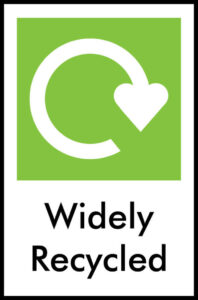 Widely Recycled
Widely Recycled
This label is applied to packaging that is collected by 75% or more of local authorities across the UK, for example plastic bottles.
………………………….
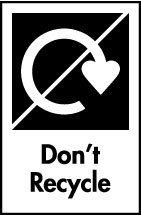 Don’t Recycle –
Don’t Recycle –
This label is applied to packaging when less than 20% of local authorities collect it kerbside across the UK, for example crisp packets. This waste generally goes in the general waste bin, unless you are informed otherwise, or taken to specialist recycling units.
………………………….
 The Green Dot
The Green Dot
The Green Dot is the financing symbol for the organisation of recovery, sorting and recycling of sales packaging.
………………………….
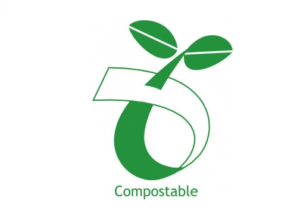 Compostable
Compostable
Packaging products certified to be industrially compostable acccording to European standard EN 13432 or EN14995 (non packaging products). The ‘seedling’ logo should not appear without a valid license number e.g. 7Pxxx, issued by DinCertco or a partner authority in the country of registration. Put these items in your garden waste or food caddy bins.
………………………….
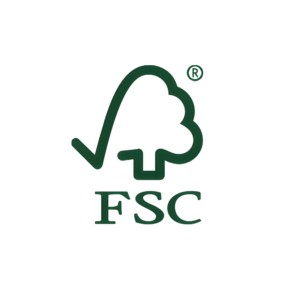 Forest Stewardship Council
Forest Stewardship Council
The Forest Stewardship Council (FSC) logo identifies wood-based products, from well managed forests independently certified in accordance with the rules of the FSC. e.g. paper and cardboard.
………………………….
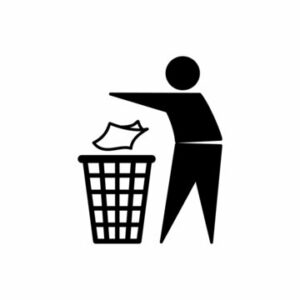 Tidyman
Tidyman
This is a logo create by Keep Britian Tidy, it is a reminder and encouraging message not to litter, to instead dispose of your waste in a proper and correct manner.
………………………….
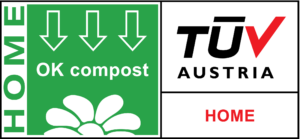 OK Compost Home
OK Compost Home
Belgian ‘OK Compost Home’ specification is managed by the certification body Vinçotte, who also operate their ‘OK Compost’ (aligned to EN 13432) certification scheme. This specification contains similar requirements to EN 13432 but testing is based on lower temperatures associated with home composting.